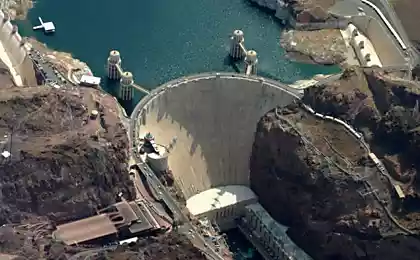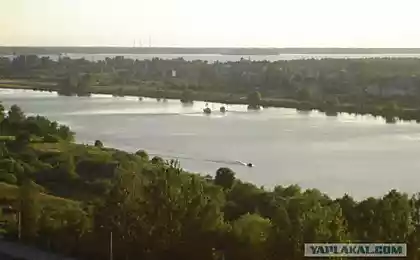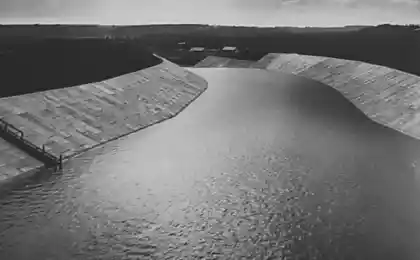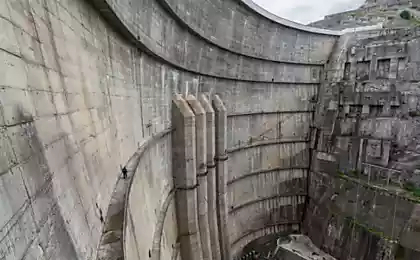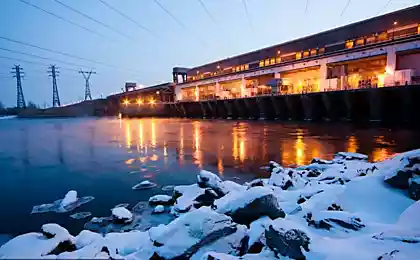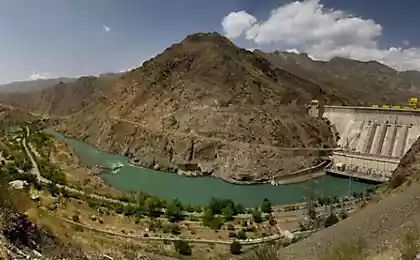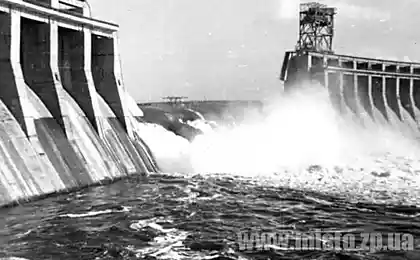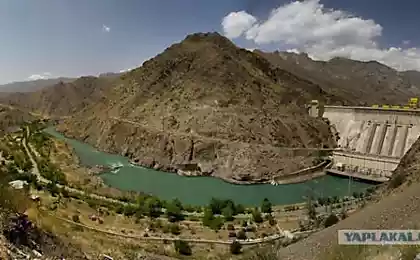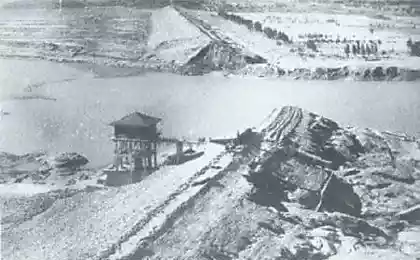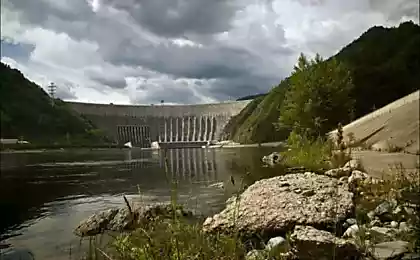575
Who and why turned the fight against the dams around the world?

International day of action against dams — bobiny antiphrastic © Diliago/Ridus.EN
"Ridus" to find out who and why is against the construction of new and decommissioning of existing river barriers.
For many people unrelated to the case of the people against dams is akin to fighting windmills – another crazy idea turned to conservation ecologists. In the best case, someone will remember flooded during the creation of the Uglich reservoir is the bell tower of St. Nicholas Cathedral in Kalyazin or works of Valentin Rasputin "Farewell to Matyora", which describes the tragedy of the peasants displaced from their villages due to the construction of Bratsk hydroelectric power station. In the filling of Bratsk reservoir was flooded more than 100 villages on the banks of the Angara river and about 70 economic developed Islands. It is possible to argue that for a much larger number of people the opening of the Bratsk hydroelectric power station turned into a blessing, but not so obvious as it might seem at first glance.
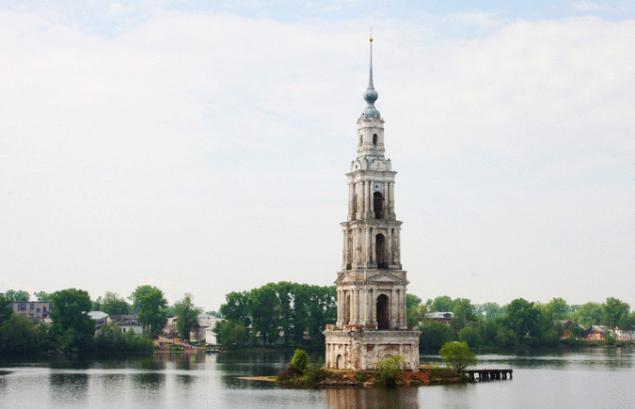
© Maria Vashchuk/RIA Novosti "In our view, in most cases, the benefits that a person receives from the construction of dams, and especially large ones, much less the costs and damage that they bring to the environment," he explained, "Reedus," the head of the Krasnoyarsk public Association "the Dam.No!" Alexander Kolotov.
There are several factors that affect the person in the construction of large dams. It directly to eviction, environmental degradation and, oddly enough, the economic costs. But about all under the order.
In 1997 in the Brazilian city of Curitiba at the First international conference against the construction of large dams was announced data showing that over the last 50 years due to the construction of dams, their homes were forced to leave 60 million people and this population of modern Italy. As a more specific example is the construction of a hydroelectric power station, which destroyed the agricultural civilization in the valley of the Angara river with the relocation of 200 thousand people.
In addition, emergency situations and accidents at hydroelectric power plants lead to volleys of water downstream, which leads to destruction and victims. Large dams are crumbling more rarely small, but the consequences of accidents on them where as the significantly — from 75 victims at the Sayano-Shushenskaya HPP in 2009 to 170 thousand died during the breakthrough of the Chinese Banqiao dam in 1975.

The Banqiao dam Environmentalists remind us that GES violated the most important human environment. So, for many Eurasian people of the river valleys are traditional comfortable place of living and farming. But by the construction of dams they are flooded.
"A large dam, we are actually destroying the river, fragmentiem it and almost completely change the ecosystem. Disappearing river fish species because reservoirs there is no running water. In particular, disappeared noble species of fish, which is famous for the Hangar, and instead we have weed fish species in the reservoirs," says Alexander Kolotov.
So what are compensated resettlement of people, the destruction of ecosystems and the possible risks in case of accidents? Recently published research from Oxford University says that large dams usually do not pay off at all. After analyzing 245 projects in 65 countries, the researchers came to the conclusion that in modern conditions the construction of large hydroelectric power stations always (!) unprofitable and lost in comparison with the creation of other renewable energy sources, not to mention the energy efficiency.
"Corruption and social inequality inevitably accompany mega-hydropower projects, always involving the enrichment of a few and the arrangement of costs on local communities, society, and the national budget. So to recoup Boguchanskaya HPP, Russia had to change the rules of pricing in the energy sector, in the direction of increased cost of energy to consumers", — says the coordinator of the international coalition "Rivers without borders" Yevgeny Simonov.
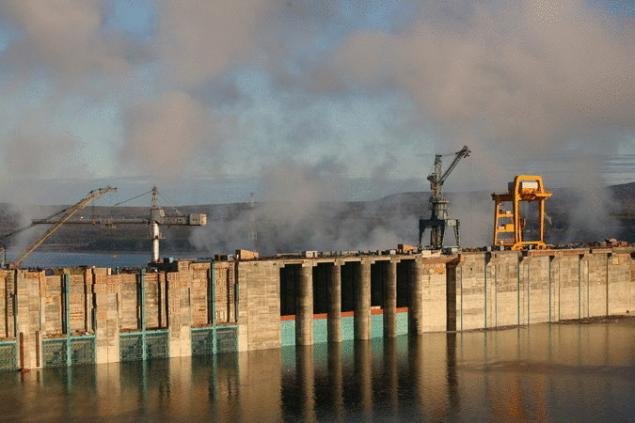
Boguchanskaya hydroelectric power station© Alexander Kryazhev/RIA Novosti opponents of the dam urge to ask the question: "do we need a new dam? Can existing enough already?" According to Alexander II, the construction of a new hydroelectric power station in Siberia is pointless, because their main task will be to export cheap electricity to China.
"Our southern neighbor, do need energy to develop their own industries. So, we are building a dam in Siberia, to provide an improvement in the GNP of China. We have, unfortunately, such large consumers, under which it would be necessary to build such a hydroelectric power station, no," he says.
But what to do with already existing large and small dams, and that their destruction? Every year, hundreds of dams, mostly small and medium-dismantled in many countries. This is usually done to recover the migration of the fish flock to the spawning grounds and in most cases projects are very successful. It is also possible to restore the natural flow regime of water and sediment for many tens and hundreds of kilometers downstream, and thus restores the natural ecosystem of the river valley previously oppressed due to violations hydroregime. At some extent, succeeds to rehabilitate the reservoir area, which is overgrown with meadow or forest, or used for farmland or recreational areas. Fully restored, this area is very difficult, since the reservoir accumulate hundreds of tons carried in river sediments, often with heavy metals and other toxic substances.

The Hoover dam © Natalia Seliverstova/RIA Novosti "Withdraw large dam out of operation and disassemble — very costly and complicated process. In particular, therefore, we say that HPP is no renewable source of energy, because the number of river valleys is very limited, and they quickly settled under the dam and reservoir. Descent most large reservoirs — it is also painful, because the local population has long been one way or another uses them on the farm and did not have the resources and the desire to radically restructure the entire way of land use. That is why this self-evident economically feasible project, as the decrease in the level of shallow waters of the Rybinsk reservoir, not supported by a significant part of local residents. So much cheaper and wiser not to build large dams without emergency need," — says Yevgeny Simonov.
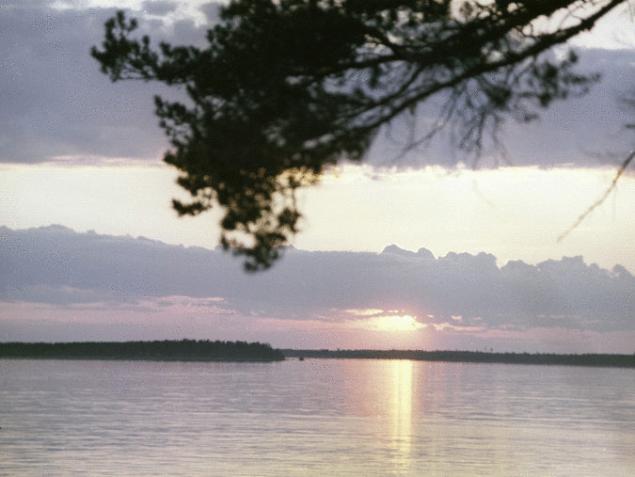
Rybinsk reservoir © Minkevich/RIA Novosti If the United States and Australia the dismantling of dams — organized process aimed at restoring ecosystems in Russia, liquidation of abandoned reservoirs in rural areas is primarily caused by the threat to their breakthrough and flooding downstream villages and that does not involve proper planning of the recovery environment. Although the natural flow regime and then is usually restored after the destruction of the dam. So in the Amur region, 2003-2007 removed from the balance sheet and eliminated dozens of unnecessary small dams. The same fate previously befell most dams are built for the electrification of the village on Lenin's electrification plan, and ecosystems of the basin are mostly recovered.
More recently, the ocean took a special system of relicensure large and small dams. Depending on year built, each dam takes this procedure to continue operations. This process directly involved the people who live around the dam. And the owners are usually forced to negotiate with the local population and to invest in human settlements development. We have such processes is not expected.
"Even now in Russia when creating new projects hydropower, hydropower does not lay on them the cost of removing the dam from operation to return the free flow of the river, bringing in the exact condition. Why? Because it immediately sharply increases the cost of the entire project – it is simply not economically profitable," says Alexander Kolotov.
The movement against dams is gaining more and more weight, and its activists often listen. Thanks to their efforts, the United States was dismantled two shestidesyatimetrovoy dam, and Sweden adopted a law that forbids the building of a dam with a height of over fifteen metres. In Russia, success of this level no, but work is conducted, and the expert community is not giving up. On the occasion of the Day of action against dams published an open letter to the Plenipotentiary representative of Russian President in far Eastern Federal district Yuri Trutnev and Deputy Prime Minister Arkady Dvorkovich, in which leading independent experts Express their views about the plans for the construction of new HPPs in the Amur basin.
Source: www.ridus.ru
I bet you don ' t know 10 facts about the different
Littered areas in Russia are the size of Belgium
